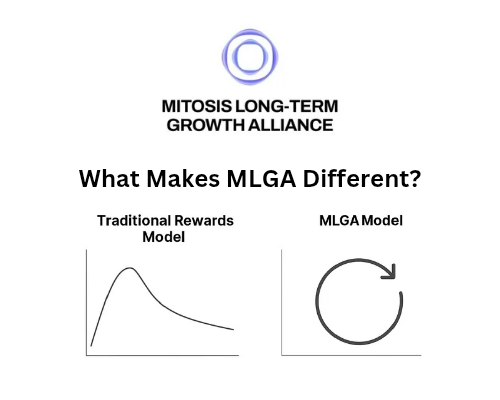5 things you didn't know about Eclipse

INTRODUCTION
As the blockchain world evolves, modular designs are pushing the limits of performance, scalability, and developer flexibility. One standout project in this movement is Eclipse. A modular Layer 2 that brings together the Solana Virtual Machine (SVM) and the Ethereum ecosystem. Most people know Eclipse for its bold architecture and speed, but there’s a lot more beneath the surface.

Here are 5 facts you didnt know about Eclipse that make it a project worth watching:
Multi-VM Architecture Is Coming
While Eclipse currently runs on the Solana Virtual Machine (SVM), it is designed to support multiple virtual machines in the future. This means developers could potentially deploy both SVM-based and EVM-based applications on the same Layer 2. This is a game-changer because it breaks down the silo between Ethereum and Solana ecosystems, allowing dApps and devs from both worlds to share a high-performance, modular environment.
Eclipse isn't just about porting apps, it's about convergence. Developers will no longer have to choose between ecosystems. They can build once and deploy across VMs with native-level performance.
It Uses Solana's Execution Model Without Solana's Validators
Eclipse leverages the power of the Solana Virtual Machine [known for its blistering speed and parallel processing] but doesn’t rely on Solana’s consensus mechanism or validator set. Instead, Eclipse settles on Ethereum, uses Celestia for data availability, and integrates RISC Zero for fraud proofs.
This hybrid architecture means Eclipse delivers Solana-like performance while maintaining Ethereum-grade decentralization. It avoids Solana's occasional network outages and performance bottlenecks, while benefiting from Ethereum's security and economic trust.
It’s Fully Modular (and Future-Proof)
Unlike most Layer 2s, Eclipse is fully modular across all layers:
Execution Layer: Solana Virtual Machine (SVM)
Data Availability: Currently Celestia, but swappable
Settlement: Ethereum, but also potentially configurable
Fraud Proofs: Powered by RISC Zero’s zk tech
This modularity means Eclipse can upgrade or swap components without re-architecting the entire system. If a better data availability solution than Celestia emerges, Eclipse can integrate it. If another settlement layer becomes more efficient, Eclipse can adapt. This design ensures longevity and constant innovation.
Modular design also means developers and infrastructure providers can experiment with components more freely, enabling faster R&D and more robust deployments.
It Targets Solana Devs First (Then Ethereum)
Most Ethereum L2s like Optimism and Arbitrum cater exclusively to EVM/Solidity developers. Eclipse, on the other hand, is unique in that it starts with the Solana developer ecosystem. Solana devs can deploy on Eclipse with minimal changes, gaining access to Ethereum's liquidity and security benefits.
Eclipse is also working on EVM compatibility, meaning it will soon offer a bridge between two of the largest developer communities in Web3. This hybrid appeal gives Eclipse a strategic edge over more narrowly focused rollups. It also creates the conditions for more robust, multi-chain applications.
It Could Enable Parallel Execution of Entire dApps
Solana is known for parallel transaction execution, and Eclipse inherits that strength. But the vision goes further: Eclipse aims to support entire smart contract environments executing in parallel. In other words, multiple dApps could run independently without blocking each other, reducing network congestion and improving real-world performance.
This is particularly exciting for:
- High-frequency DeFi apps
- Real-time games
- Consumer apps like social media or messaging
It opens the door for performance-intensive applications that are currently unviable on Ethereum or its EVM-based rollups.

Why Developers Should Build on Eclipse
- Performance That Scales With Users: With SVM’s parallel execution and a modular stack, Eclipse offers performance that scales horizontally. Developers can confidently build applications that need fast confirmations, high throughput, and user responsiveness.
- Ethereum Trust, Without Ethereum Bottlenecks: By settling on Ethereum, Eclipse provides the same security assurances as major rollups but with dramatically better execution speeds. It’s ideal for builders who want Ethereum-grade security without the latency and cost.
- Composable Ecosystem and Developer Tools: With a growing ecosystem and strong focus on developer experience, Eclipse makes it easy to migrate from Solana or prepare for multichain apps. Tooling, documentation, and SDKs are being actively developed to reduce onboarding friction.
- Early Mover Advantage: As Eclipse is still early in its lifecycle, developers who build now can benefit from ecosystem support, visibility, and potential incentives. With an airdrop and token launch on the horizon, early builders are likely to be rewarded.

What Makes Eclipse Different from Other L2s in Terms of Scalability?
Most Ethereum Layer 2s scale by compressing EVM transactions and posting them to Ethereum. While this helps reduce gas costs, these rollups still inherit EVM’s sequential execution model which limits performance.
Eclipse, by contrast, uses the Solana Virtual Machine, which supports parallel execution. This means multiple transactions and smart contracts can run at the same time, utilizing available cores more efficiently. For apps like order book, DEXs, games, or social feeds, this is transformative.

Additionally, Eclipse's use of Celestia for modular data availability removes the storage bottlenecks common to Ethereum-based DA models. This results in faster, more scalable block propagation without compromising decentralization.
The combination of:
- Parallel execution
- Modular data availability
- Ethereum settlement
- zk fraud proofs
...gives Eclipse unmatched scalability while preserving decentralization and composability.

CONCLUSION
Eclipse is more than just another Ethereum Layer 2. It’s a fully modular, Solana-powered execution environment built for speed, scalability, and cross-ecosystem development. With multi-VM support on the horizon, a deeply flexible design, and a novel developer-first strategy, Eclipse is positioning itself as one of the most forward-thinking projects in the L2 space.

If you're a developer....
BUILD ON ECLIPSE.

Comments ()